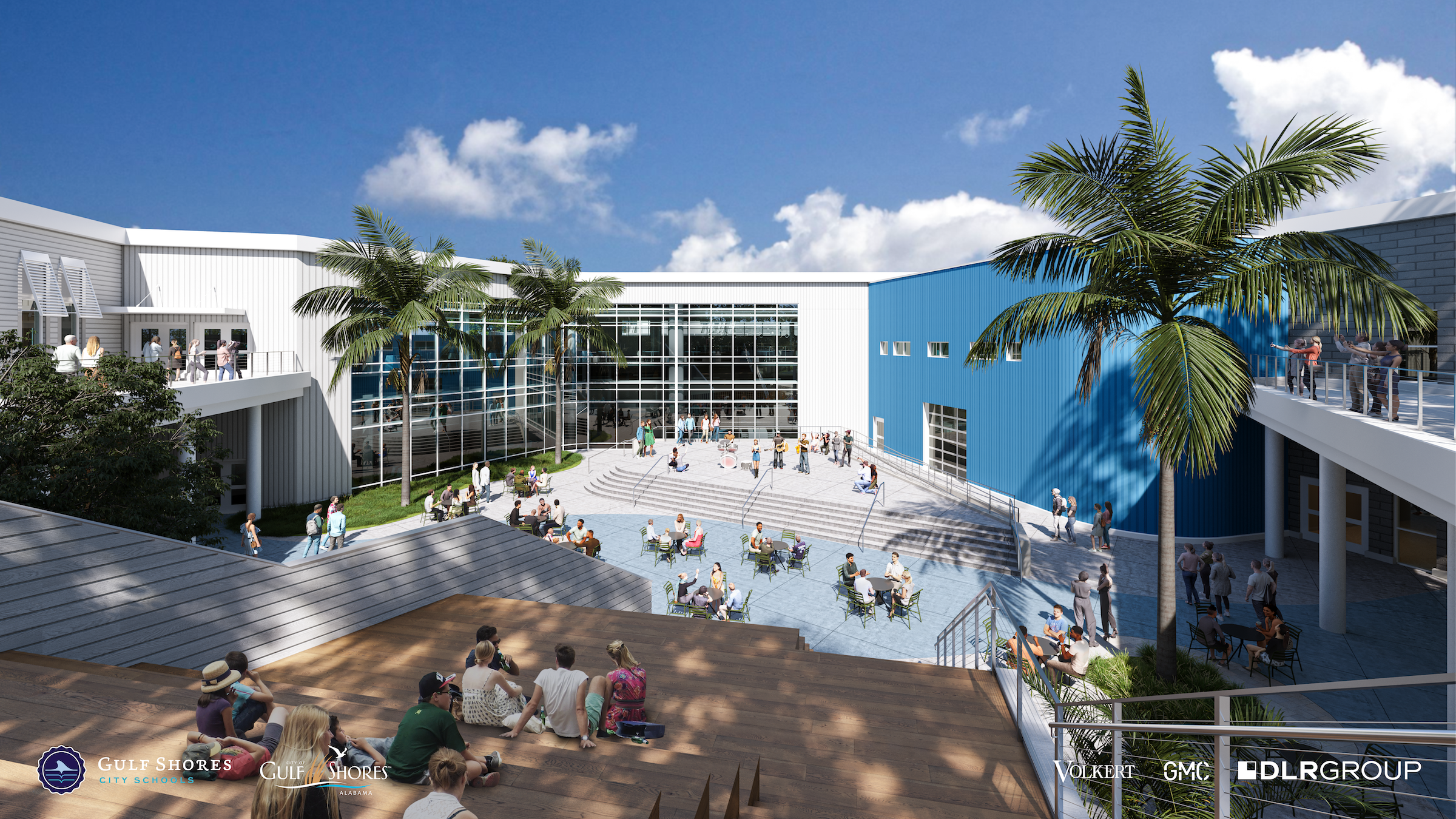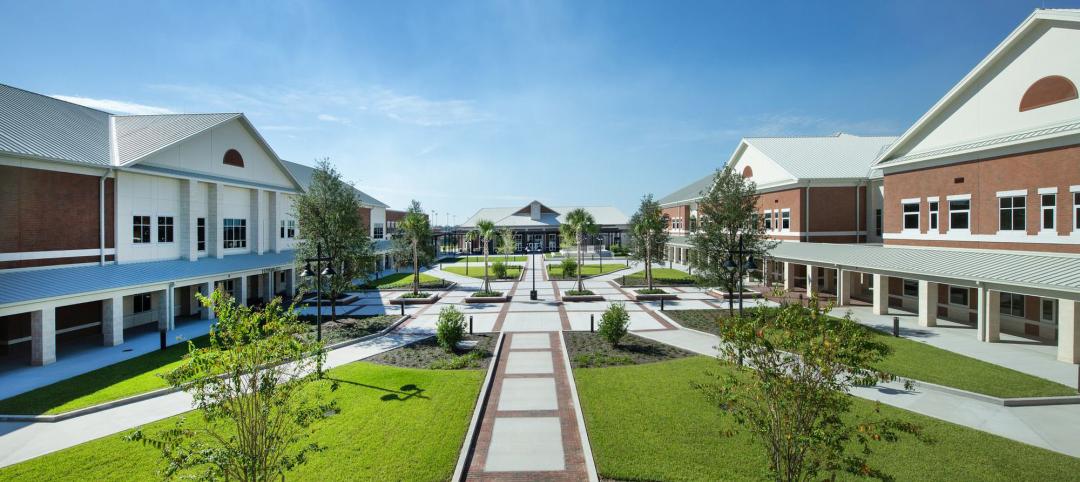In Gulf Shores, a city on Alabama’s Gulf Coast, a new $137 million high school broke ground in late April and is expected to open in the fall of 2026.
Designed by DLR Group and Goodwyn Mills Cawood, the 287,000-sf Gulf Shores High School will offer cutting-edge facilities and hands-on learning opportunities. The school will include state-of-the-art academic labs specializing in biomedical, marine biology, culinary arts, and finance, as well as spaces for music production, broadcasting, and the arts.
The school’s collaborative spaces include widened hallways, a media center with a maker space and video production studio, and a courtyard with “learning stairs” for interaction. The design also serves Gulf Shores City Schools’ emphasis on inclusivity and diversity of learning styles, with adaptable learning spaces and flexible classroom designs.
A notable feature of the new school is a “flex suite,” a versatile area that can accommodate groups of varying sizes, with seamless transitions between various activities. Similarly, the main hallway’s “sandbar” offers students a space to connect academically and socially.
The school’s Dolphin athletics center will be equipped with competition-size gymnasiums, locker rooms, athletic training rooms, a weight room, and a full-length covered practice facility.
Drawing on the coastal surroundings, the design features vibrant blue tones and other details that evoke the Gulf’s shoreline. Tall windows and expansive glass panels provide natural light and create an energizing learning atmosphere.
“The collective dedication of our educators, passionate community members, and forward-thinking leaders has shaped the vision for our new Gulf Shores High School,” Kevin Corcoran, Gulf Shores City Schools board of education president, said in a statement. “This school will be a hub of innovation, a center for excellence, and shape the future for generations to come.”
On the Building Team:
Owners: Gulf Shores City Schools and The City of Gulf Shores
Architect of record: Goodwyn Mills Cawood
Design architects: DLR Group and Goodwyn Mills Cawood
MEP engineer: DLR Group
Structural engineer: Tucker-Jones Engineers Associates
Interior designer, civil engineer, landscape architect: Goodwyn Mills Cawood
Interior designer, theatrical designer, lighting and acoustical engineer: DLR Group
Program manager: Volkert, Inc.
General contractor: Rabren General Contractors
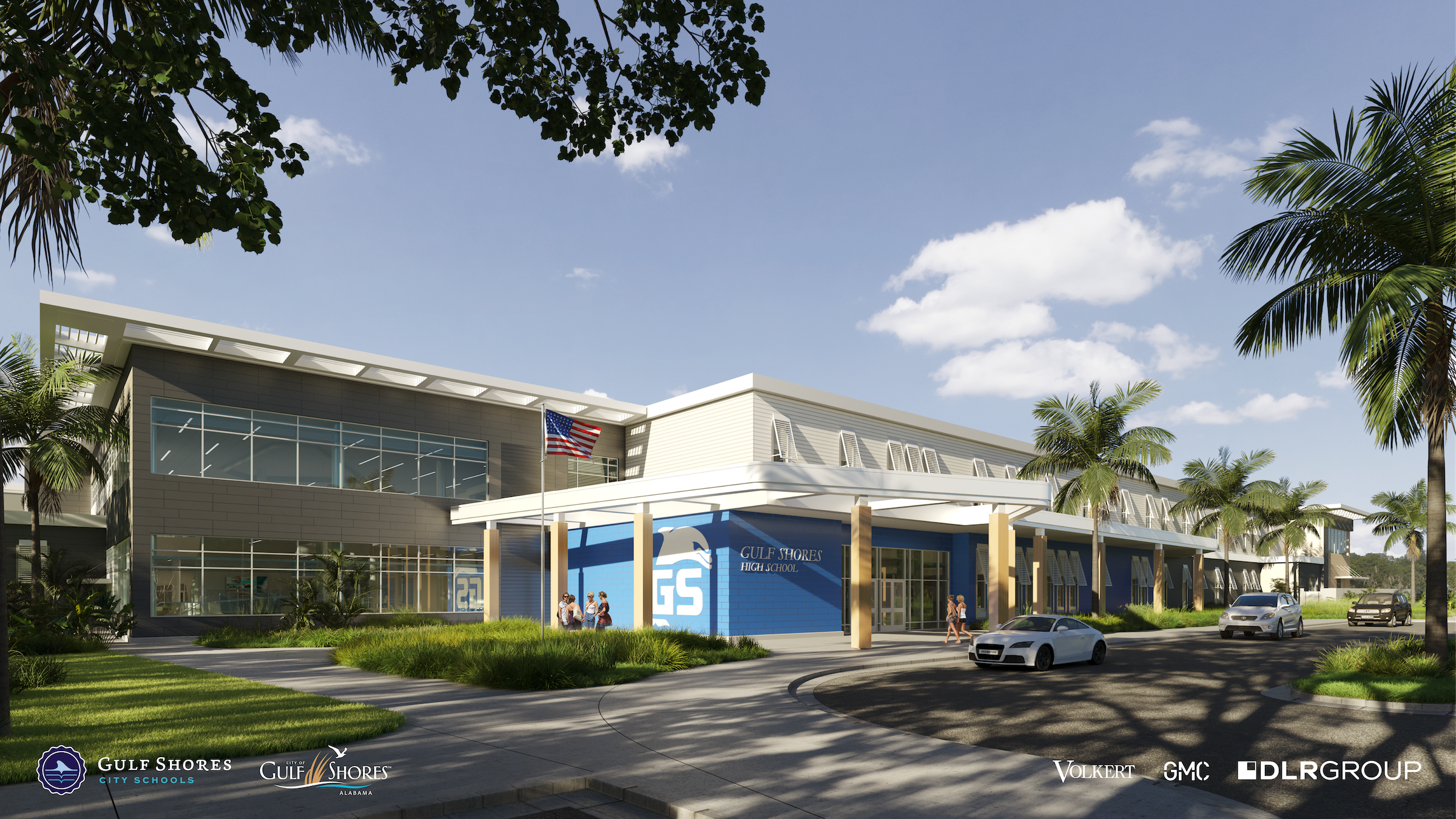
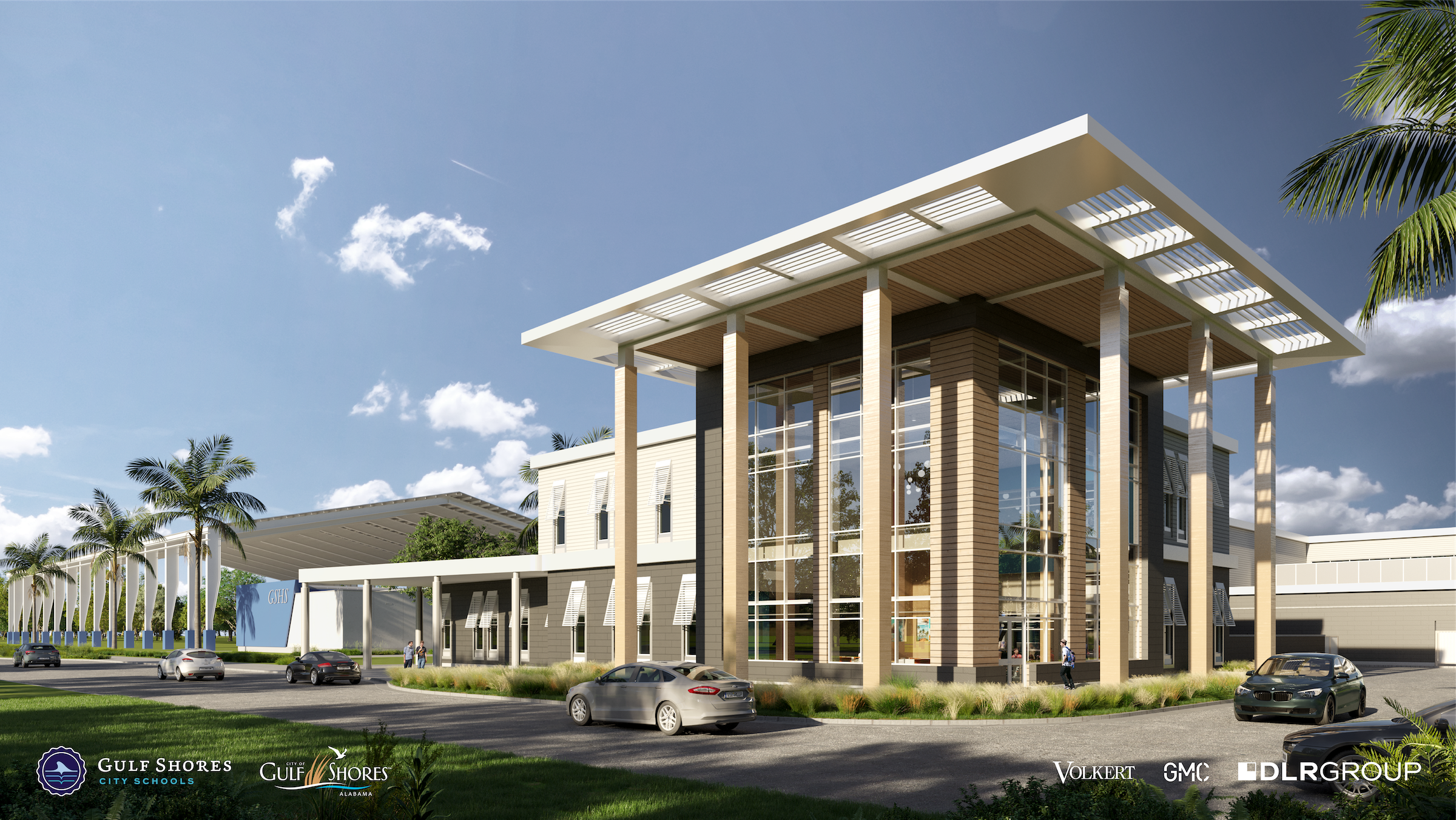
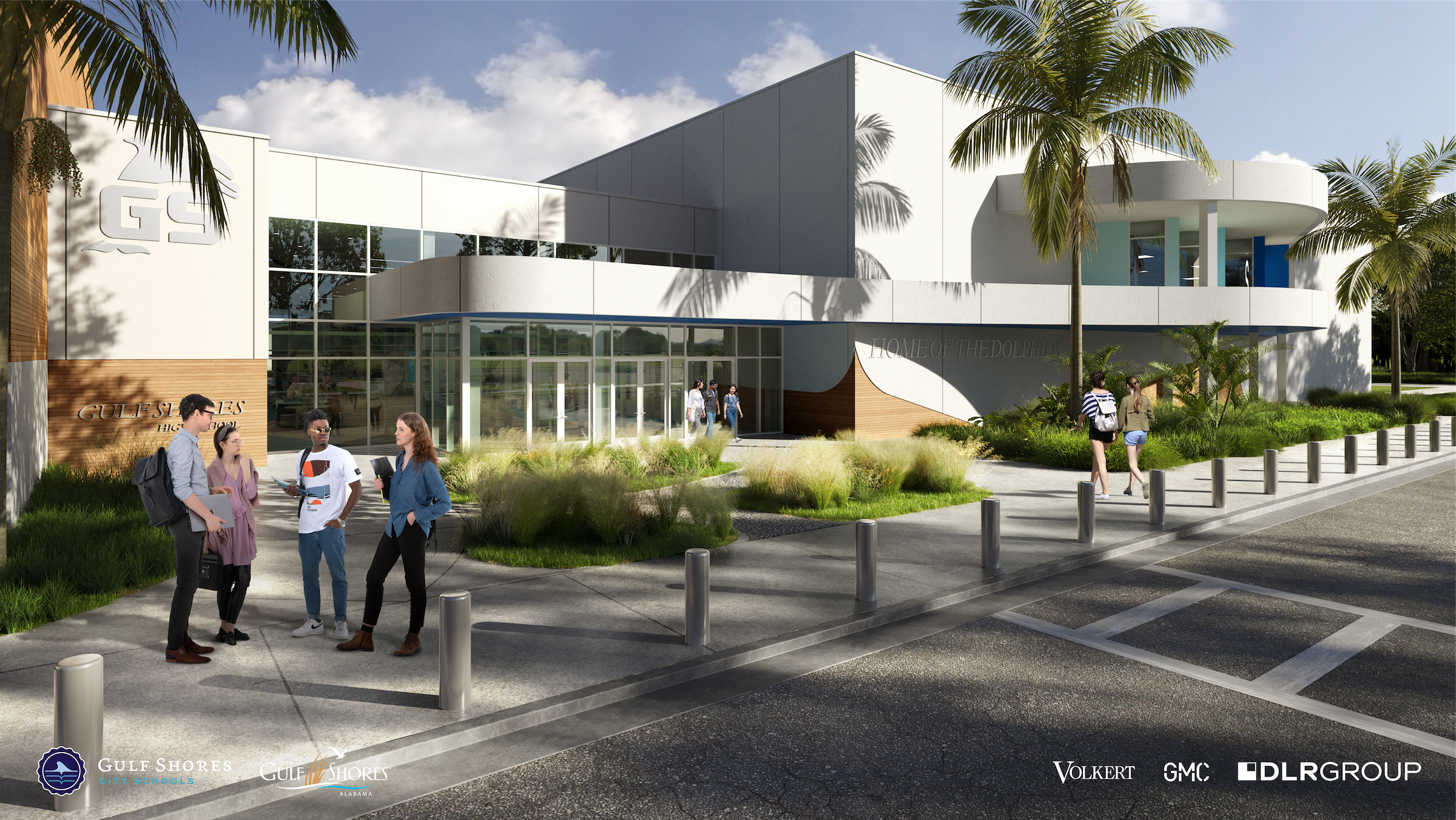
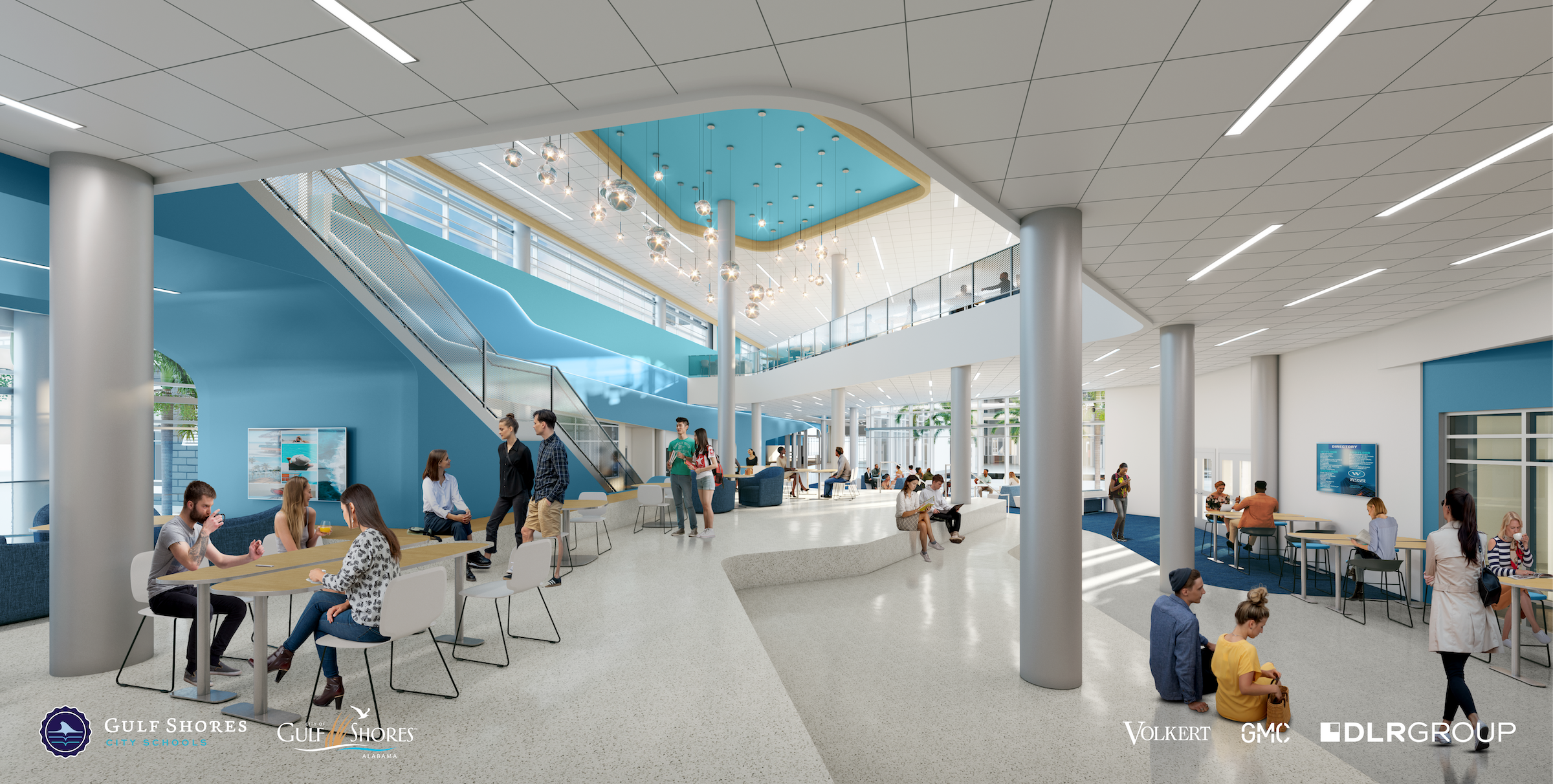
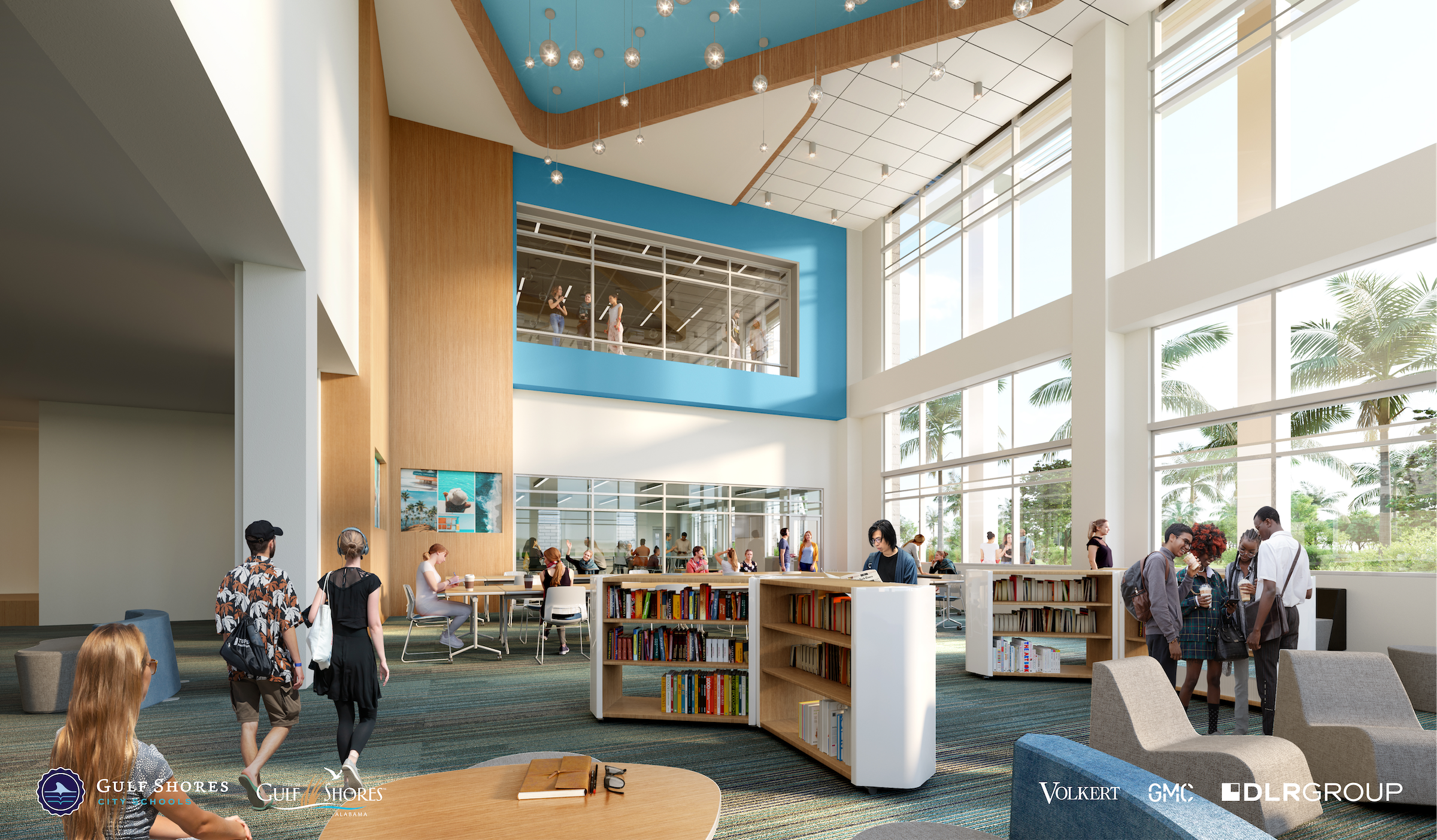
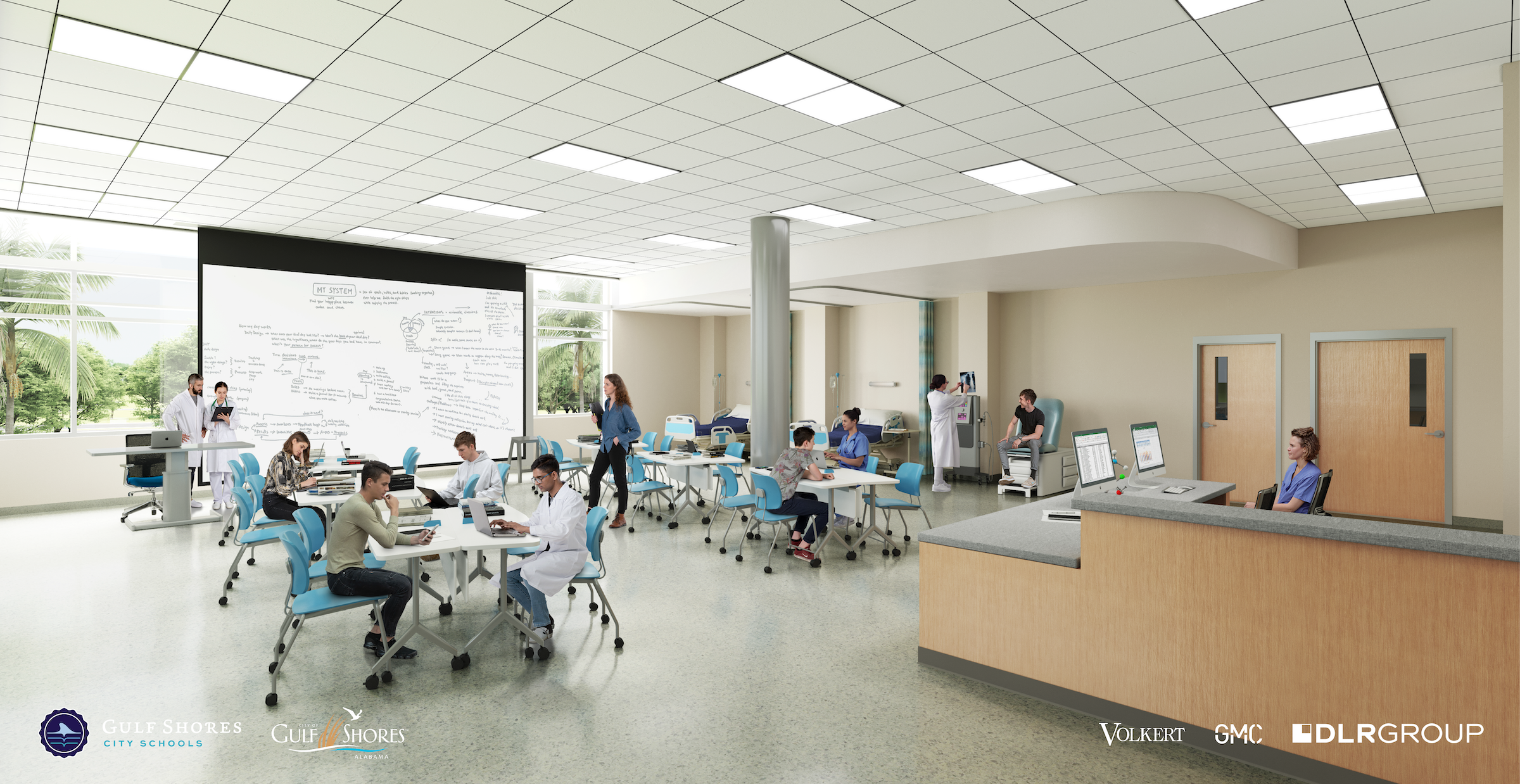
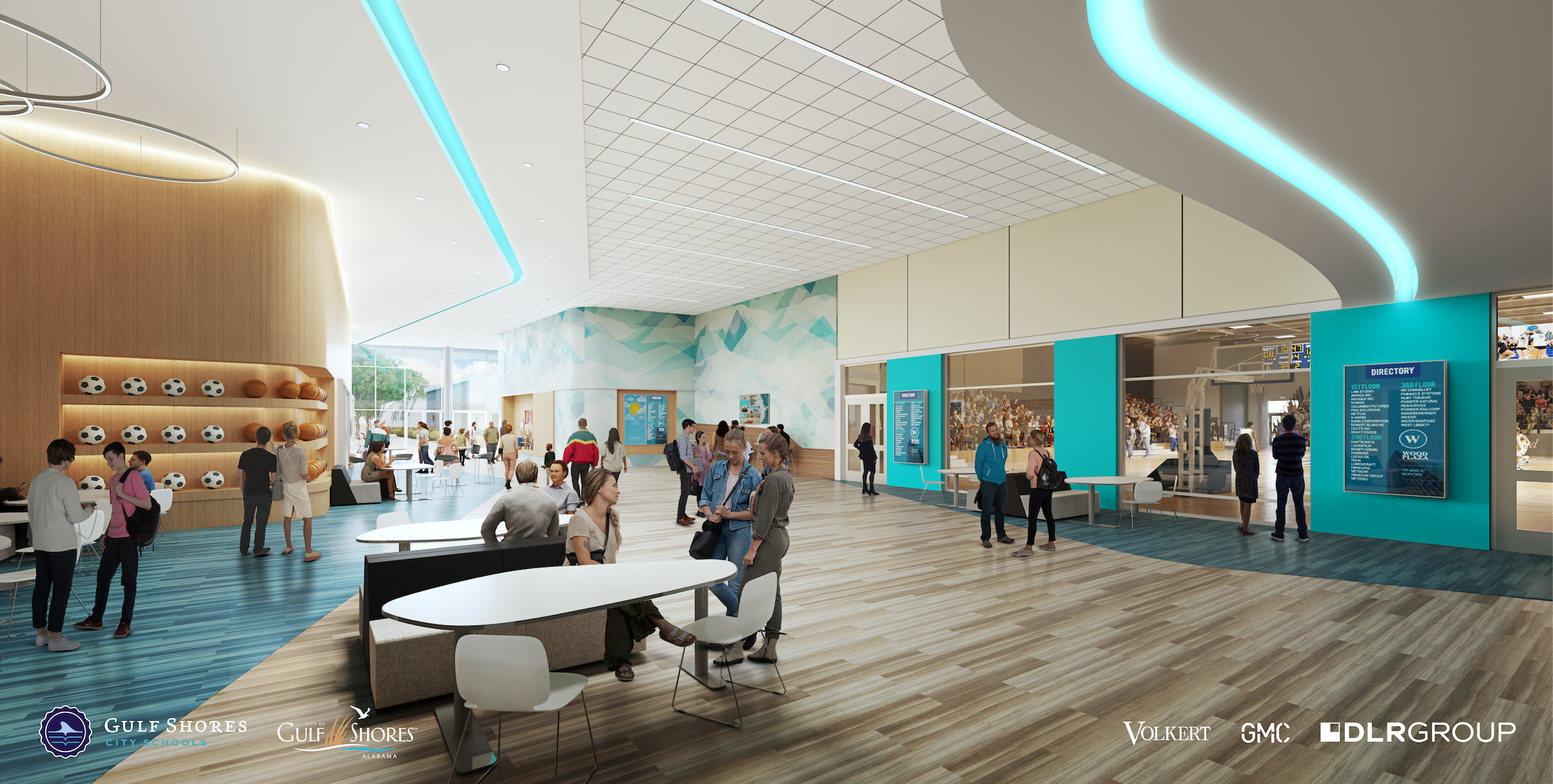
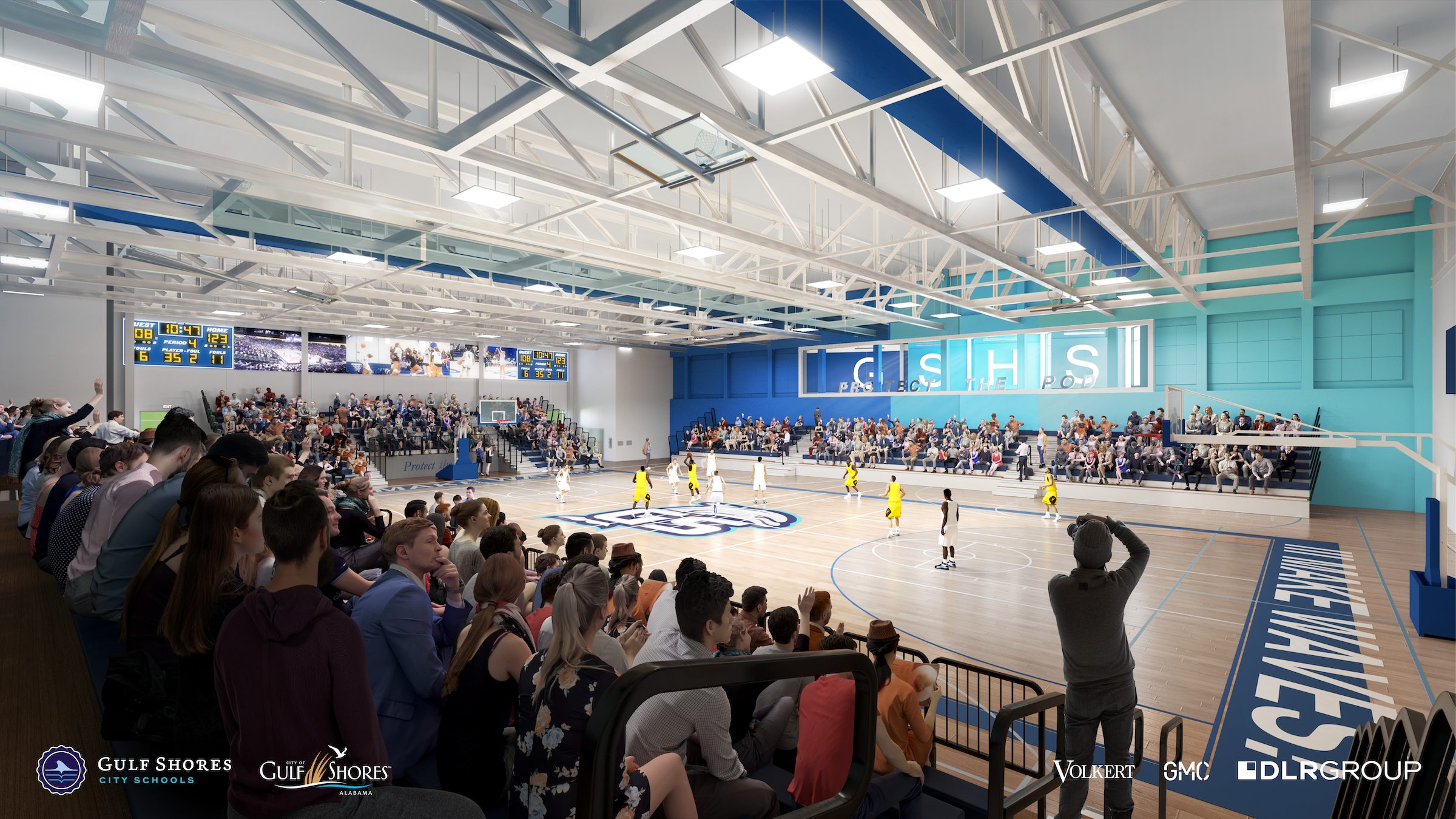
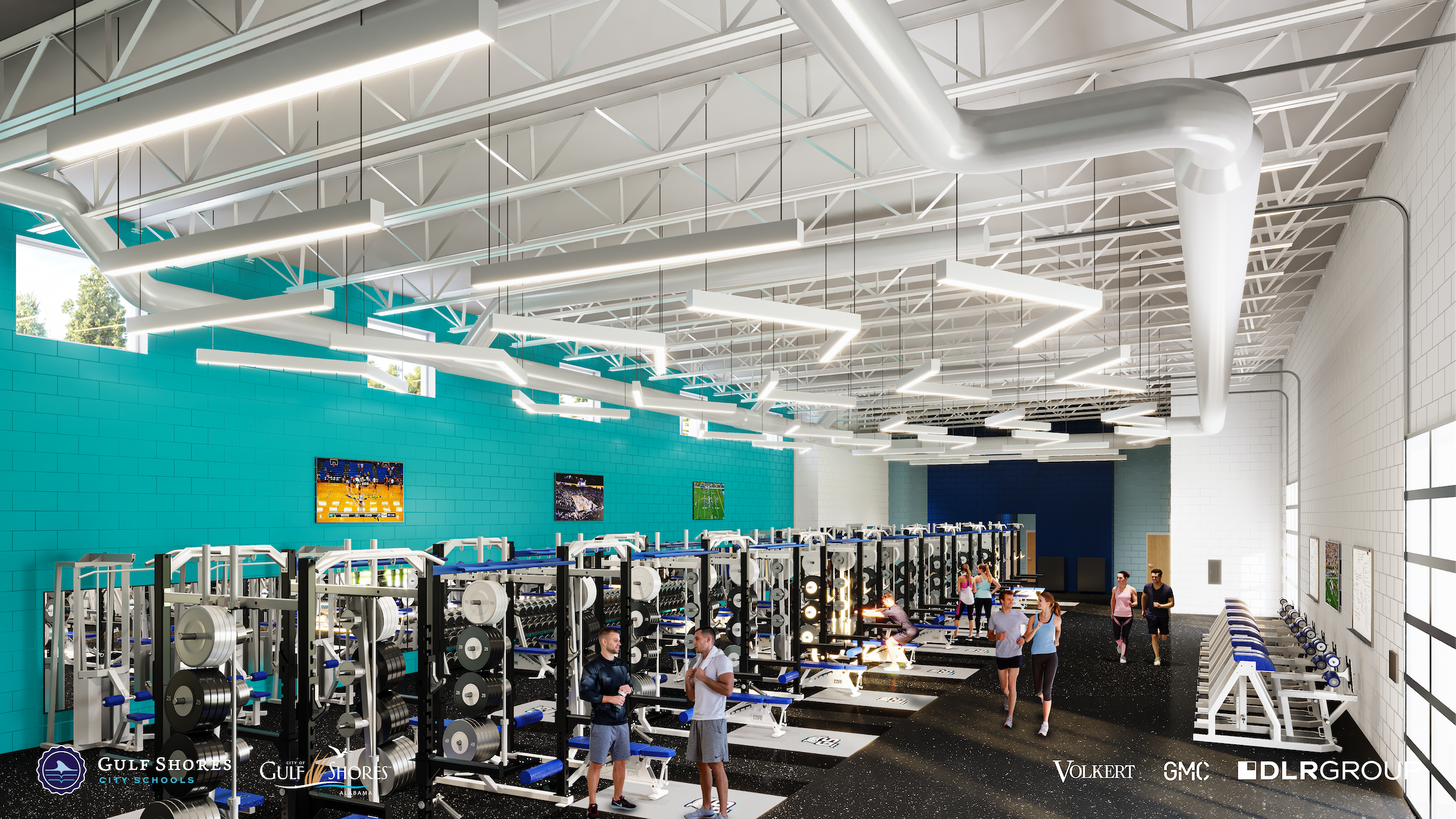
Related Stories
K-12 Schools | Sep 30, 2024
The importance of selecting healthy materials for K-12 projects
Clark Nexsen interior designers Anna Claire Beethoven and Brittney Just, CID, IIDA, LEED Green Associate, share why it is imperative to specify healthy building materials in K-12 schools.
Education Facilities | Sep 16, 2024
Hot classrooms, playgrounds spur K-12 school districts to go beyond AC for cooling
With hotter weather occurring during the school year, school districts are turning to cooling strategies to complement air conditioning. Reflective playgrounds and roads, cool roofs and window films, shade structures and conversion of asphalt surfaces to a natural state are all being tried in various regions of the country.
K-12 Schools | Aug 29, 2024
Designing for dyslexia: How architecture can address neurodiversity in K-12 schools
Architects play a critical role in designing school environments that support students with learning differences, particularly dyslexia, by enhancing social and emotional competence and physical comfort. Effective design principles not only benefit students with dyslexia but also improve the learning experience for all students and faculty. This article explores how key design strategies at the campus, classroom, and individual levels can foster confidence, comfort, and resilience, thereby optimizing educational outcomes for students with dyslexia and other learning differences.
K-12 Schools | Aug 26, 2024
Windows in K-12 classrooms provide opportunities, not distractions
On a knee-jerk level, a window seems like a built-in distraction, guaranteed to promote wandering minds in any classroom or workspace. Yet, a steady stream of studies has found the opposite to be true.
K-12 Schools | Aug 8, 2024
New K-12 STEM center hosts robotics learning, competitions in Houston suburb
A new K-12 STEM Center in a Houston suburb is the venue for robotics learning and competitions along with education about other STEM subjects. An unused storage building was transformed into a lively space for students to immerse themselves in STEM subjects. Located in Texas City, the ISD Marathon STEM and Robotics Center is the first of its kind in the district.
Smart Buildings | Jul 25, 2024
A Swiss startup devises an intelligent photovoltaic façade that tracks and moves with the sun
Zurich Soft Robotics says Solskin can reduce building energy consumption by up to 80% while producing up to 40% more electricity than comparable façade systems.
K-12 Schools | Jul 15, 2024
A Cleveland suburb opens a $31.7 million new middle school and renovated high school
Accommodating 1,283 students in grades 6-12, the Warrensville, Ohio school complex features flexible learning environments and offers programs ranging from culinary arts and firefighting training to e-sports.
K-12 Schools | Jul 1, 2024
New guidelines for securing schools and community spaces released by the Door Security and Safety Foundation
The Door Security and Safety Foundation (DSSF), in collaboration with Door and Hardware Institute (DHI), recently released of “Are Your Door Openings Secure?.” The document provides guidelines to equip school administrators, building management personnel, and community leaders with a clear roadmap to create a secure and safe environment.
Senior Living Design | Jun 28, 2024
The country’s largest retirement community expands with educational facilities
The project will include a high school, a K-8 school, and an Early Learning Center aimed at serving the children of residents who work in qualified businesses within The Villages.
K-12 Schools | May 30, 2024
Inclusive design strategies to transform learning spaces
Students with disabilities and those experiencing mental health and behavioral conditions represent a group of the most vulnerable students at risk for failing to connect educationally and socially. Educators and school districts are struggling to accommodate all of these nuanced and, at times, overlapping conditions.


